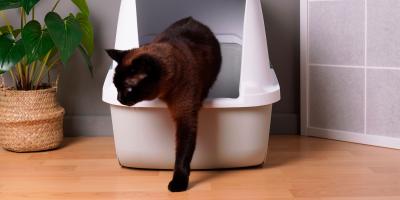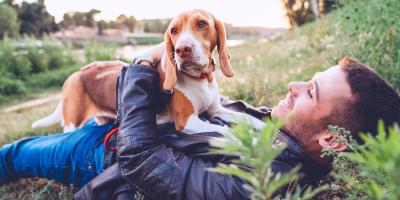
Whether your furry friend is a teacup Yorkie or a St. Bernard who tops the scales, keeping your dog at a healthy weight is one of the most important things you can do for their physical well-being. Here's an overview on how to help your dog lose weight.
Why Is a Healthy Weight Important for Your Dog?
Keeping your dog at a weight that's healthy for their individual size and breed can help them stay as fit and happy as long as possible. Here are just a few benefits staying trim has for your favourite pooch.
- Longer lifespan. One long-term study done on Labrador retrievers from the same litter showed that dogs kept at a healthy weight lived an average of two years longer than those who were obese.
- Reduced risk of many health conditions. Being overweight is linked to a higher chance of dogs developing diabetes, heart and lung problems, osteoarthritis and back issues.
- Better quality of life. A dog at a healthy weight is better able to stay active and enjoy their favourite things, such as taking a long walk, playing fetch in the backyard or jumping into the car for a Sunday drive. Even a few extra pounds can greatly limit your dog's mobility and energy levels, and staying trim helps keep them happy and healthy even in their senior years.
How to Help Your Dog Lose Weight
As with humans, how to help your dog lose weight comes down to decreasing calories and increasing activity levels. If you have a large dog that just needs to shed a few pounds, you may be able to get their weight down quickly with an extra walk and a few less treats. But dogs that need to lose a higher percentage of their body weight may take longer to reach their ideal size.
Regular Exercise
Dogs are naturally active creatures, and while activity levels vary by breed, most need a daily walk of 30 to 60 minutes for optimum health. This can be in the morning before work, or you can make it a family after-dinner tradition — just make sure you're not walking your pup right after his dinner to avoid dangerous bloat. Smaller dogs or low-energy breeds may be able to get away with a long fetch session in the backyard or a quick run through a home-made agility course, but just being out in a fenced-in yard won't provide enough exercise for the average dog.
Don't Overfeed
Dogs are known for their on-point begging skills, but giving in every time your dog gives you the puppy eyes isn't a good thing for their waistline. It's best to avoid feeding your dog table scraps at any time but especially if there is a weight issue, and overfeeding your pet on their regular food can also cause problems. If your vet has indicated that your dog has a weight problem, switching to a weight management formula for their daily food can help. The best food for overweight dogs has a lower fat content while still providing enough protein to support overall health. You can also supplement weight loss dog foods with treats such as Lite Snackers canine treats in moderation.
Follow Veterinary Advice
Anytime you're making changes to your dog's diet or lifestyle, it's important to check with your vet first. Certain breeds may need special consideration when it comes to length or type of activity — some giant breeds, for example, may need to avoid long walks — and your vet can make the best determination on what a healthy target weight for your dog should be.
If your vet has said it's time to help your dog lose weight, Purina.ca can help you take the next steps by providing tips on how to increase activity levels and offering a selection of Pro Plan weight loss and management dog food.
Related articles



